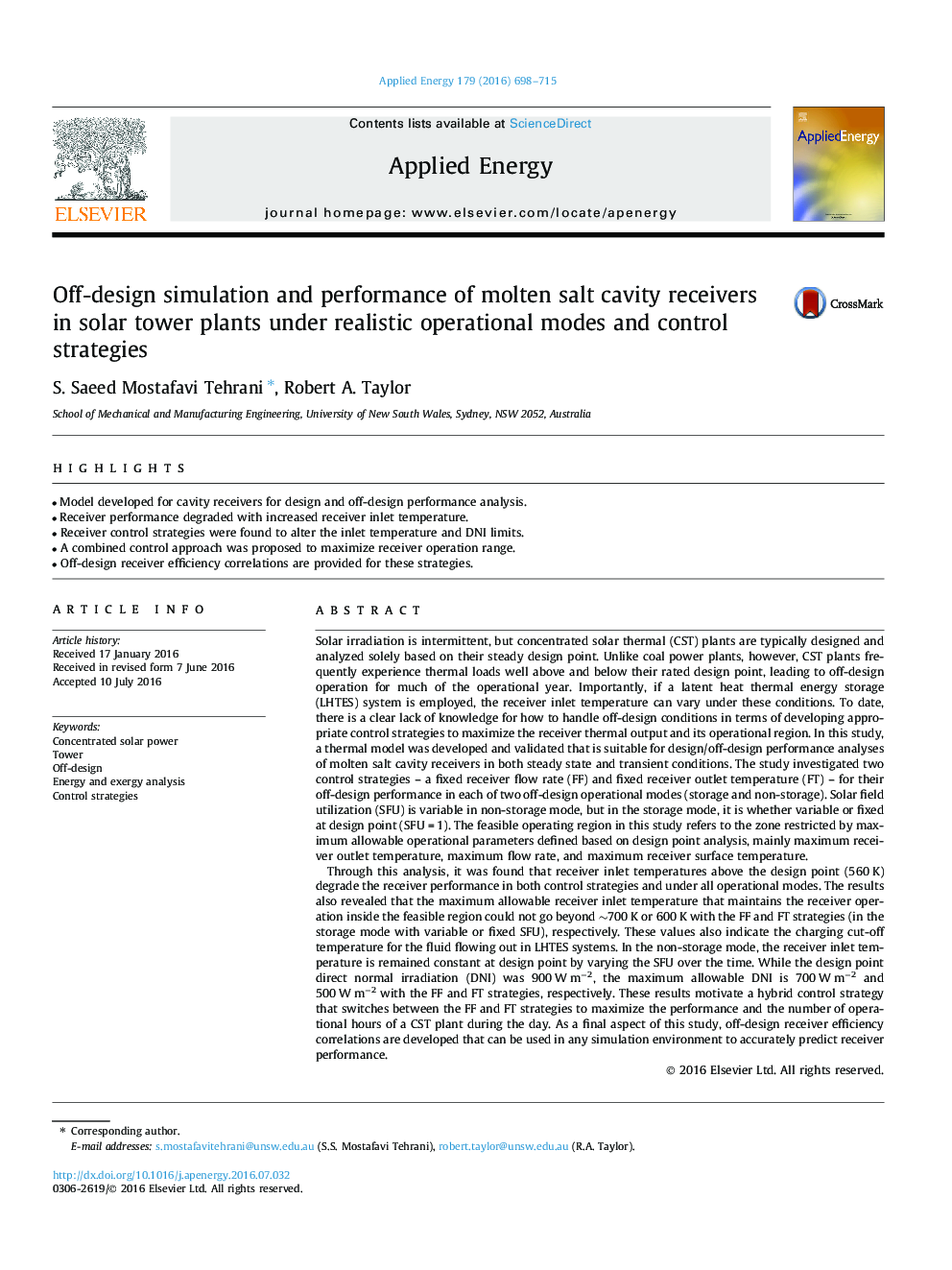| Article ID | Journal | Published Year | Pages | File Type |
|---|---|---|---|---|
| 6682256 | Applied Energy | 2016 | 18 Pages |
Abstract
Through this analysis, it was found that receiver inlet temperatures above the design point (560Â K) degrade the receiver performance in both control strategies and under all operational modes. The results also revealed that the maximum allowable receiver inlet temperature that maintains the receiver operation inside the feasible region could not go beyond â¼700Â K or 600Â K with the FF and FT strategies (in the storage mode with variable or fixed SFU), respectively. These values also indicate the charging cut-off temperature for the fluid flowing out in LHTES systems. In the non-storage mode, the receiver inlet temperature is remained constant at design point by varying the SFU over the time. While the design point direct normal irradiation (DNI) was 900Â WÂ mâ2, the maximum allowable DNI is 700Â WÂ mâ2 and 500Â WÂ mâ2 with the FF and FT strategies, respectively. These results motivate a hybrid control strategy that switches between the FF and FT strategies to maximize the performance and the number of operational hours of a CST plant during the day. As a final aspect of this study, off-design receiver efficiency correlations are developed that can be used in any simulation environment to accurately predict receiver performance.
Related Topics
Physical Sciences and Engineering
Energy
Energy Engineering and Power Technology
Authors
S. Saeed Mostafavi Tehrani, Robert A. Taylor,
